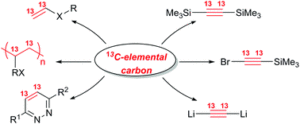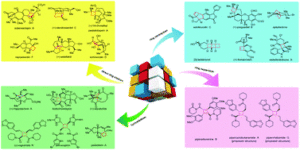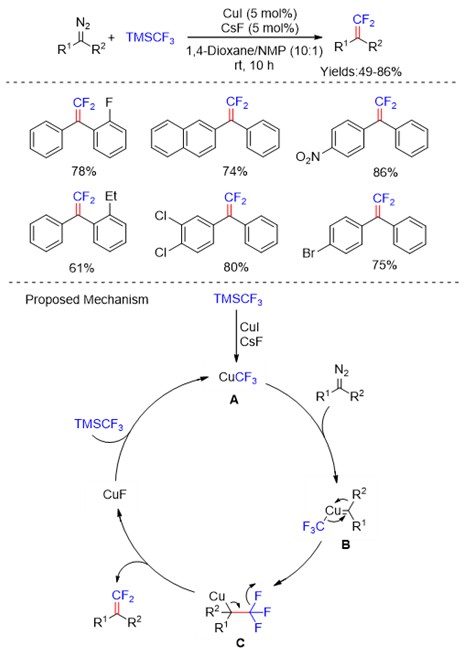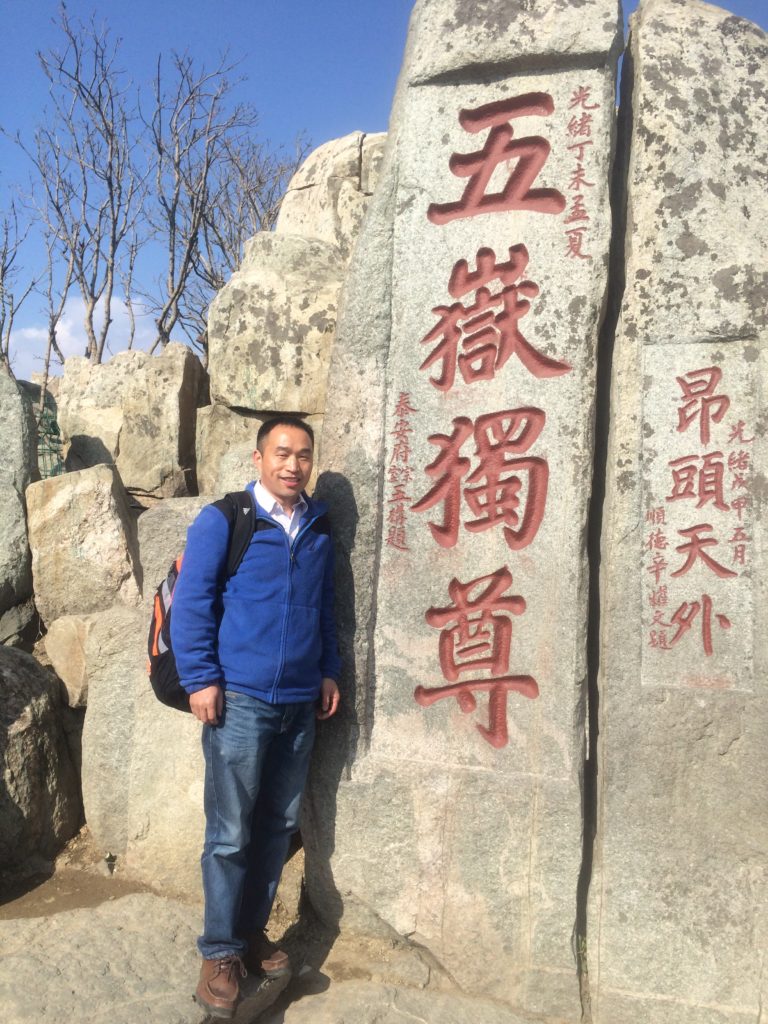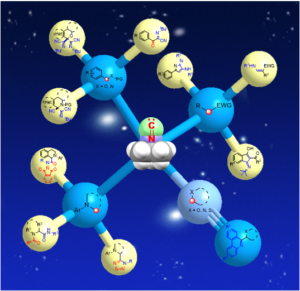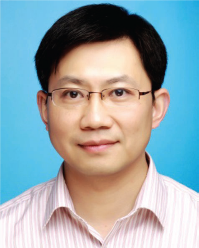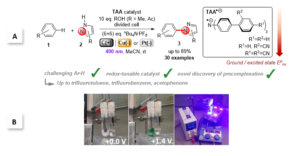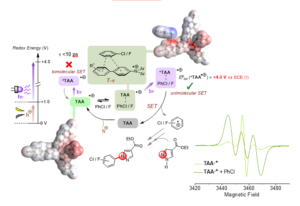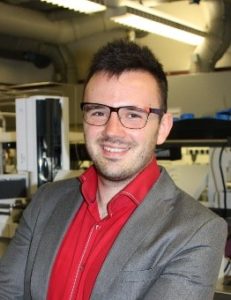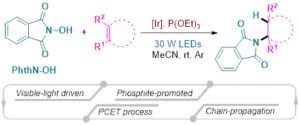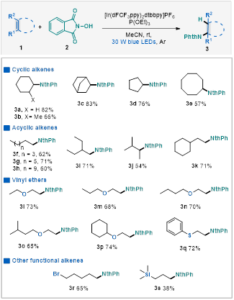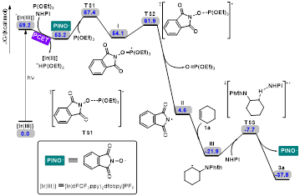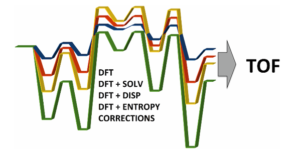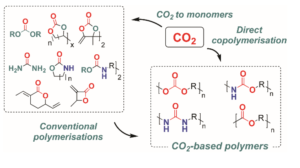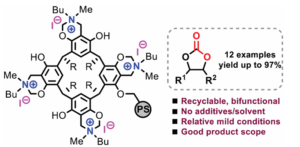Organic Chemistry Frontiers 2020 Best Paper Prizes
From this year onwards, we would like to introduce the Organic Chemistry Frontiers Best Paper prizes which recognize the most outstanding papers published in the journal. After a selection process involving the Associate Editors, Editorial and Advisory Board members, we have chosen to award not only a best paper but also a runner-up and a best review.
| Best Paper |
Enantioselective copper-catalysed defluorosilylation of trifluoro-methylated alkenes with silylboronates
Pan Gao, Liuzhou Gao, Longlong Xi, Zedong Zhang, Shuhua Li and Zhuangzhi Shi
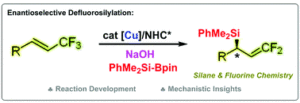
Org. Chem. Front., 2020,7, 2618-2627
https://doi.org/10.1039/D0QO00773K
Corresponding authors:
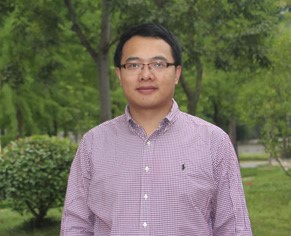
Zhuangzhi Shi received his B.S. and M.S. degrees in chemistry and organic chemistry from Yangzhou University in 2005 and 2008. Then, he moved to Peking University and completed his Ph.D. in medicinal chemistry with Prof. Ning Jiao. In 2011, he joined the group of Prof. Frank Glorius at Westfalische Wilhelms-Universitat Münster (Germany), as an Alexander von Humboldt Research Fellow. In 2014, he joined the faculty at Nanjing University as a full professor. His current research efforts are focused on synthetic methodology, including the activation of inert chemical bonds, radical chemistry, boron chemistry and asymmetric catalysis.
ORCID: https://orcid.org/0000-0003-4571-4413
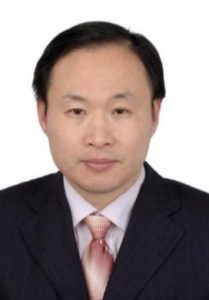
Shuhua Li is currently professor of theoretical chemistry at School of Chemistry and Chemical Engineering, Nanjing University. He received his Ph.D. in physical chemistry from Nanjing University in 1996 and then worked in Nanjing University and Texas A&M University as a postdoctoral researcher. In 2000, he joined Nanjing University as an associate professor, and was promoted as a full professor in 2002. His research interests focus on the development of novel electron correlation methods, linear scaling electronic structure algorithms, and the computational design of chemical reactions.
In 2006, he was awarded the National Science Fund for Distinguished Young Scholars. In 2008, he won the Pople Medal of Asian Pacific Association of Theoretical & Computational Chemists. In 2009, he was appointed as Changjiang Scholar Chair Professor by Chinese Ministry of Education. He received Science & Technology Award for Chinese Youth and Outstanding Young Chemist Award of Chinese Chemical Society and Royal Society of Chemistry in 2009. He was elected as the board member of the World Association of Theoretical and Computational Chemists (2014), and the board member of Asia-Pacific Association of Theoretical & Computational Chemists (2016). In 2017, he was elected as a member of the International Academy of Quantum Molecular Science. In 2020, he was elected as a fellow of Chinese Chemical Society.
ORCID: https://orcid.org/0000-0001-6756-057X
| Best paper runner-up |
Efficient labeling of organic molecules using 13C elemental carbon: universal access to 13C2-labeled synthetic building blocks, polymers and pharmaceuticals
Maria S. Ledovskaya, Vladimir V. Voronin, Konstantin S. Rodygin and Valentine P. Ananikov
Org. Chem. Front., 2020,7, 638-647
https://doi.org/10.1039/C9QO01357A
Corresponding author:

Valentine Ananikov received his Ph.D. in 1999, Habilitation in 2003, and in 2005 he became Laboratory Head of Zelinsky Institute of Organic Chemistry, Russian Academy of Sciences. In 2008 he was elected as a Member of Russian Academy of Sciences, in 2018 elected as a Member of European Academy (Academia Europaea) and in 2019 elected as Academician of Russian Academy of Sciences.
His research has been supported by grants of the President of Russia for young scientists (2004, 2007). He was a recipient of the Russian State Prize for Outstanding Achievements in Science and Technology (2004), an Award of the Science Support Foundation (2005), a Medal of the Russian Academy of Sciences (2000), Liebig Lectureship from the German Chemical Society (2010), and Balandin Prize for Outstanding Achievements in Catalysis (2010). He has been named Actively Cited Researcher – Russia by Thomson Reuters (2015). He was a recipient of the Organometallics Distinguished Author Award Lectureship by the American Chemical Society (2016), Hitachi High-Technologies Award in Appreciation for Novel Approaches and Outstanding Contributions to Setting New Standards for Electron Microscopy Applications in Chemistry (2016), Reaxys Award Russia (2019), Zelinsky Prize for outstanding achievements in organic chemistry (2020).
His educational activities include research laboratory at St. Petersburg State University and professorship at the Chemistry Department of Moscow State University.
His scientific interests are focused on catalysis, organic synthesis, molecular complexity and transformations. Web-site: http://AnanikovLab.ru
ORCID: https://orcid.org/0000-0002-6447-557X
| Best Review |
Recent advances in the total synthesis of cyclobutane-containing natural products
Jinshan Li, Kai Gao, Ming Bian and Hanfeng Ding
Org. Chem. Front., 2020,7, 136-154
https://doi.org/10.1039/C9QO01178A
Corresponding author:
 Hanfeng Ding received his Ph.D. from Zhejiang University in 2008. From 2009 to 2011, he was a postdoctoral fellow at ASTAR, Singapore. He joined the Department of Chemistry, Zhejiang University as a faculty member in September 2011. His current research interests focus on the development of new methodologies and strategies for the total synthesis of structurally complex and biologically active natural products.
Hanfeng Ding received his Ph.D. from Zhejiang University in 2008. From 2009 to 2011, he was a postdoctoral fellow at ASTAR, Singapore. He joined the Department of Chemistry, Zhejiang University as a faculty member in September 2011. His current research interests focus on the development of new methodologies and strategies for the total synthesis of structurally complex and biologically active natural products.


